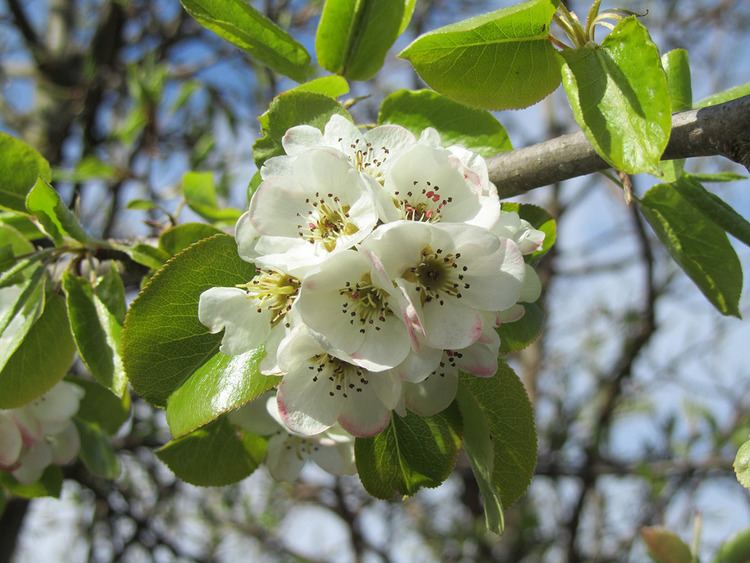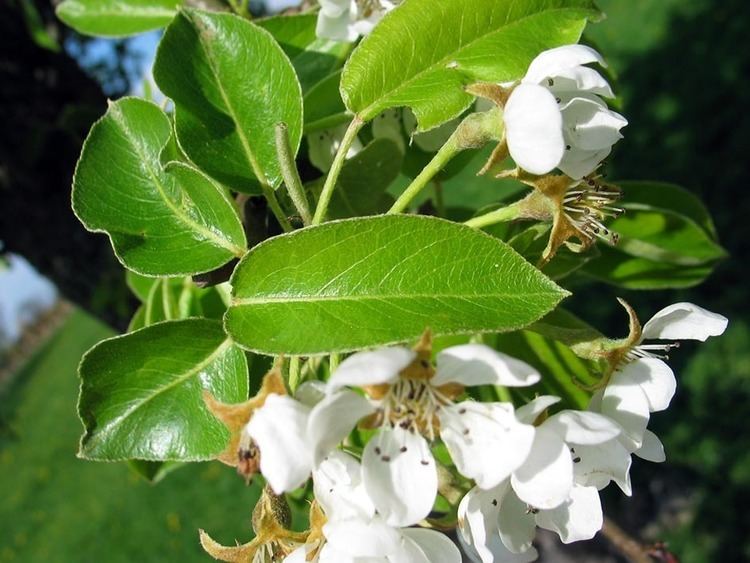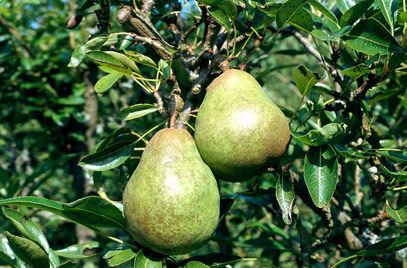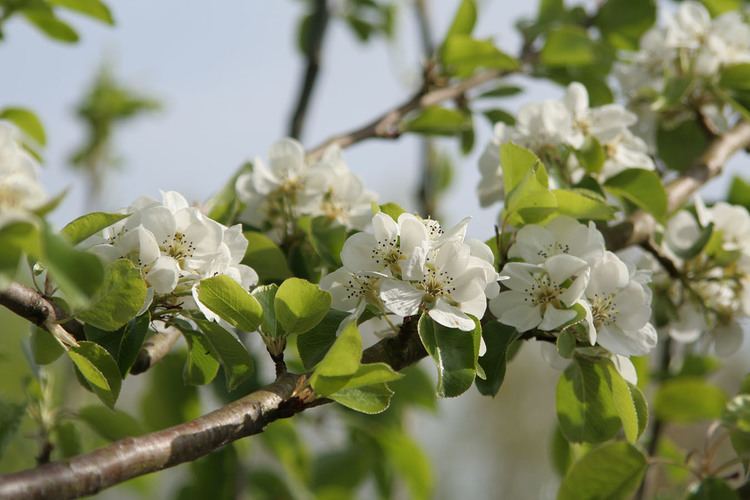Scientific name Pyrus communis Higher classification Pear | Genus Pyrus Rank Species | |
 | ||
Lower classifications Williams pear, Bosc pear, Pear 'Beurre Hardy', D'Anjou, Gieser‑Wildeman pear Similar Pear, Common plum, Quince, Williams pear, Armenian plum | ||
Wild deer pear pyrus communis
Pyrus communis, known as the European pear or common pear, is a species of pear native to central and eastern Europe and southwest Asia.
Contents
- Wild deer pear pyrus communis
- Nature insights the lambroughton pear pyrus communis
- Origin
- Cultivation
- Major cultivars
- Selected European pear cultivars
- References

It is one of the most important fruits of temperate regions, being the species from which most orchard pear cultivars grown in Europe, North America, and Australia have been developed. Two other species of pears, the Nashi pear (Pyrus pyrifolia) and the hybrid Chinese white or ya pear (Pyrus × bretschneideri, Chinese: 白梨; pinyin: báilí) are more widely grown in East Asia.

Nature insights the lambroughton pear pyrus communis
Origin

The cultivated European pear (P. communis subsp. communis) is thought to be descended from two subspecies of wild pears, categorized as P. communis subsp. pyraster (syn. P. pyraster) and P. communis subsp. caucasica (syn. P. caucasica), which are interfertile with domesticated pears. Archeological evidence shows these pears "were collected from the wild long before their introduction into cultivation", according to Zohary and Hopf. Although they point to finds of pears in sites in Neolithic and Bronze Age European sites, "reliable information on pear cultivation first appears in the works of the Greek and the Roman writers." Theophrastus, Cato the Elder, and Pliny the Elder all present information about the cultivation and grafting of pears.
Cultivation

European pear trees are not quite as hardy as apples, but nearly so. However, they do require some winter chilling to produce fruit. A number of Lepidoptera caterpillars feed on pear tree leaves.
For best and most consistent quality, European pears are picked when the fruit matures, but before they are ripe. Fruit allowed to ripen on the tree often drops before it can be picked, and in any event will be hard to pick without bruising. Pears store (and ship) well in their mature but unripe state if kept cold, and can be ripened later, a process called bletting. Some varieties, such as Beurre d'Anjou, ripen only with exposure to cold.
Fermented pear juice is called perry. In Britain, the place name "Perry" can indicate the historical presence of pear trees.
Relatively few cultivars of European or Asian pears are widely grown worldwide. Only about 20-25 European and 10-20 Asian cultivars represent virtually all the pears of commerce. Almost all European cultivars were chance seedlings or selections originating in western Europe, mostly France. The Asian cultivars all originated in Japan and China. 'Bartlett' (Williams) is the most common pear cultivar in the world, representing about 75% of US pear production.
Major cultivars
In the United States, 95% of reported pear production in 2004 came from four cultivars:
Selected European pear cultivars
Those marked agm have gained the Royal Horticultural Society's Award of Garden Merit.
